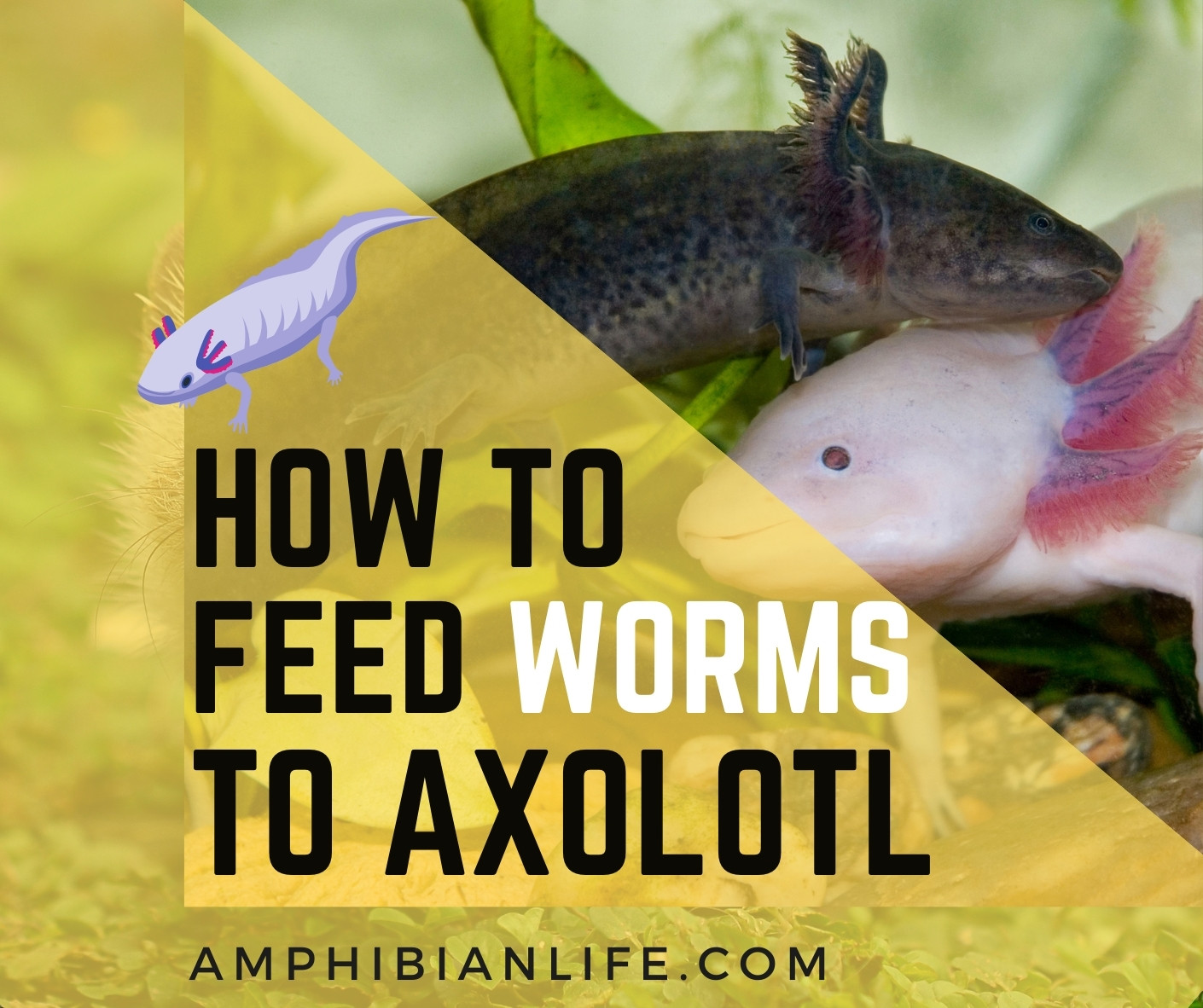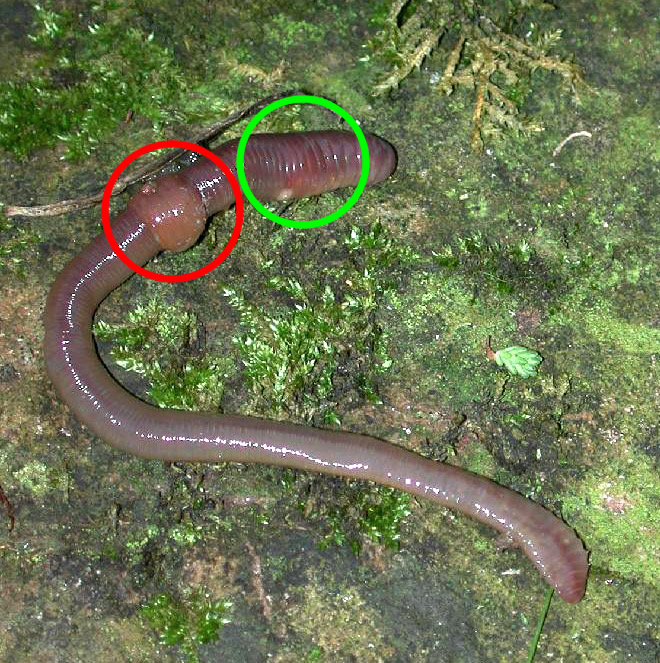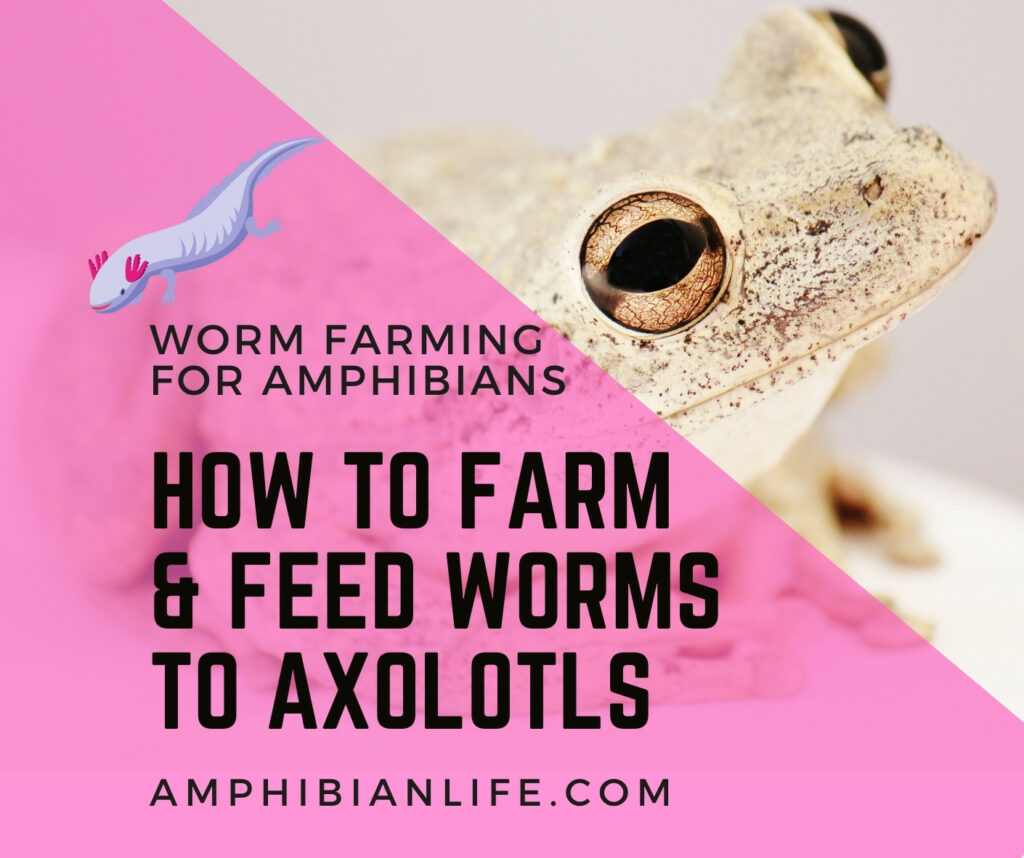
Have you ever wondered how convenient and beneficial worm farming can prove?
Effective ways to Feed Worms To Axolotl Garden enthusiasts and Amphibian owners agree to the fact that worm farming has several benefits.
Worm Farming For Amphibians (Frogs, Salamanders, And Axolotls)
What is worm farming?
Worm farming or Vermicomposting is a natural and sustainable way to produce your own food for amphibians.
It is an incredibly effective way with several advantages of which cost-effectiveness and sustainability are the most important.
Once you have a wealthy popping warm farm, you are sorted for a limitless food supply for amphibians.
How to setup a worm farm at home.
Setting up and Maintaining Worm farming for Amphibians!
Worm farming isn’t rocket science, but the right steps are crucial to ensure that no efforts go to waste.
Here is a quick and easy guide that will narrate all the necessities of building your own worm farm. Have a look:
- Firstly, take a large plastic tub, preferably 25L with extra width. Make sure you have a well fixing lid, which will further help keep worms inside.
- Now collect a pin, a pair of pliers, a candle, and a matchbox.
- Light the candle, hold the pin in the pliers and heat it over the candle flame. With the help of a heated pin, punch multiple holes on the lid for allowing air to pass. Keep the holes tiny, ensuring no worms can pass away through them.
- Now take some soil. You can take untreated compost or soil, including organic compost, plain topsoil and several others. Take 10 to 15L of soil at first, though further, you would require some more for topping up occasionally.
- Further, get some worms. Begin with 50 worms. You can buy worms from organic farming suppliers, seed shops, pet stores, bait shops or even online platforms. Choose from Segmented worm-like tiger worms, lobworms, nightcrawlers, red wrigglers etc.
Nevertheless, Optionally
- Catch your own worms from your backyard or garden. (The process of catching worms is explained below).
- Now fill the plastic tub with compost and then add the worms. If you live in a warm region, sprinkle some water over the tub (soil and worms).
- Further, boil some potatoes until they are cooked- Take any kind of potato, even sprouted, green, or cold-stored. Now slice them in not more than ¼ inch thickness and then put them to boil. Once done, crush them roughly and lay a thin layer of it on the top of the worm tub. Do not add anything else to the potatoes.
- Now keep the worm farm in the dark place like cupboard, outhouse, storeroom, or covered under a thick layer. The purpose here is to stop the tub from getting heated up by the sunshine.
- Check occasionally and once your warms have eaten the last batch of food, feed them again. Along with cooked potatoes, you can use vegetable waste, cooked (without seasoning) vegetables etc. You can also use grains like oats, though avoid fruits as they can turn acidic.
- Make sure the soil does not get too wet. If it does, remove the soil, recover the worms and mix them with dry soil and use them again. (The damp soil you removed can be used for gardening.)
TIP: To keep the moisture build-up at bay, replace the plastic lid with something cotton. For example, take a breathable cotton cloth and tie it firmly over the pot with some elastic. Doing so will encourage evaporation and prevent moisture build-up.
Worm breeding or vermicomposting takes three months. Their breeding cycle is nearly one month, where the process of mating and egg-laying takes place.
Also, because worms are hermaphroditic, each individual possesses male and female sexual organs thus don’t worry about their gender.
Once you have got successful results from worm farming, you can further feed them to your amphibians.
Consider keeping the biggest worms for further breeding and use the mid and small-sized ones for feeding. As and when the breeding flourishes, you can increase the number of tubs.
For Further Reading:
- How Much Do Axolotl Cost?+ Plus cost of Tank And Accessories
- Do Axolotls Have Many Colors? (And Why So Many)
How to Catch worms from your garden?
Catching worms isn’t a great deal of effort, though luck and weather play an important role. After a rainy evening, step out in your garden and look for worms on a hot weather day.
- Begin with finding a bare garden space that is free of chemicals and fertilizers. Now take some boiled potato mash/ slice and place it over the empty garden space. You can also take wet newspaper or cardboard instead.
- Further, after 30 minutes, pick up the potato mash/ slice or newspaper/ cardboard and check for worms underneath. A successful effort will generate a wealth of worms and creepy crawlies.
You can try this method on other areas or another batch frequently if the condition suits you.
How to Feed Worms to Your Axolotl?
The Axolotl is the aquatic amphibians whose dietary needs depend solely upon meat. Unlike other amphibians, petting an Axolotl is strictly a task of alertness and effort.
Even though it is well known that Axolotl eats worms, do you know how to feed them to your Axolotl?
Axolotl has particularly weak teeth which makes it impossible for them to grind and bite.
Thus like several other amphibians, Axolotl too sucks their food and digests it in their intestines.
As per the thumb rule, feed worms that are no larger than Axolotl’s mouth. The perfect size is equal to the gap (width) between their eyes.
Benefits of Feeding Worms
The digestive system of an Axolotl is designed for a protein-rich diet which makes worms the best food option.
Worms are a rich source of nutrients offering a high level of amino acids, iron, and protein.
They also contain calcium as per cow’s milk, along with copper, manganese, and zinc.
Eating worms promotes healthy gill filament growth in Axolotl.

What Types of Worms can Axolotls Eat?
Though they are highly dependent upon worms, it didn’t mean Axolotls can eat all and any worms.
Here are some best and recommended worms you can feed to Axolotls.
Micro worms:
Because Micro worms are small in size, a freshly hatched or baby Axolotl will quickly eat them.
Blackworms, Bloodworms, Earthworms:
They are ideal for grown-up/ young Axolotls. Though because certain worms can be huge, consider buying the smaller version or cut them into pieces.
In contrast, a growing Axolotl can eat half to 1 worm daily. A grown-up Axolotls can have two worms daily.
Mealworm and Wax Worm:
Further, because mealworms have strong jaws, they can harm Axolotl’s intestines.
Therefore, before feeding mealworms, consider crushing or removing their head and then provide them as a treat.
How often should you feed axolotls? Well, Do not feed it more than once in 10 days.
In contrast, Wax Worms are big and complex, thus tricky for Axolotls to swallow.
Wax Worms are rich in carbohydrates and fats, which can prove unhealthy for Axolotl in the long run. You can use them as treats but only in moderation.

Which worms to avoid feeding Axolotls?
Worms that have a hard exoskeleton like Red Wigglers are really bad for your Axolotls.
Anything with a hard exoskeleton, Axolotls find it challenging to digest.
They might not like the taste, and it can upset their stomach as well.
Though Red wigglers are a treatment option for Axolotls, you must still be really cautious while feeding them. A similar case is with Mealworms.
Alabama Jumpers are another no for feeding your Axolotls. They are found in Asia and are not native to the United States. Alabama Jumpers are vital and thus great for soil and gardening;
However, this quality makes them worst for feeding. Because of their aggressive wiggling and strength, Alabama Jumpers are not ideal for feeding your Axolotls or other amphibians.
Avoid feeding Canadian and European nightcrawlers to your Axolotls. Both of them are usually dyed for fishing; thus, it is advisable to avoid them for feeding purposes.
How to Store Your Worms?
Not only breeding but storing your worms is also an art of the proper techniques and efforts. Holding your worms depends mainly upon the type of worm you are breeding.
- Storing Blackworms
Black worms are really easy to store. Take a food-safe container with a wide bottom and fill it up to 2 inches with water.
Now spread a thin layer of blackworms over it. Ensure you rinse them frequently with cold water, or black worms can die because they get too dirty.
- Storing Nightcrawlers
The best way to store nightcrawlers is in the fridge. Simply pack them in a plastic container and keep them inside the refrigerator. This way, they will last long and fresh.
- Storing Dendrobaena Worms.
Dendrobaena worms are really easy to store. Like blackworms, store your Dendrobaena in a plastic bucket, half filled with water.
Close the bucket and make sure you store it in a cool and shaded place.
- Storing Lobworms
Storing Lobworms is a matter of effort. They are mainly transported in a mix of moss peat, cardboard, cardboard dust, and clay dust.
Thus, it is essential to store them in a similar condition. They don’t need the coldest temperature; therefore, you can keep them in a shaded, darkroom.
Though, make sure that the container you are using is well ventilated.
How to Make a Worm Bin?
If you have amphibians at home, worm bins are the best way to feed earthworms to them. It not only provides for feeding, but worms can even breed in the bins, economically producing more food.
For worm bins, either invest in a pre-made worm bin or DIY your own container out of waste at home.
DIY worm bin at home
- Take a few plastic boxes and a plastic lid.
- Now heat a knife over the flame and then poke small holes at the base of a plastic box.
- Spread a thin layer of rocks on the bottom of the box as it will help for drainage.
- Now poke a hole on the second box as well. Further, set it inside the box with rocks.
- Further fill the top box with composting like dead leaves, crushed eggshells, topsoil etc. You can also add non-glossy black and white newspaper and cardboard.
- Now mix some vegetable scraps. Consider steaming the vegetable scraps first, as it will help worms to break them faster. Just make sure you do not overfill the vegetable scraps, or it will lead to a foul smell.
- Also, you must fill the bin with composting material, about an inch or two from the top.
- Once all of this is done, pour or sprinkle some water to generate moisture. Make sure it is moderately damp.
- Further, stir your worms into the compost bin and then put the lid over.
Consider turning soil up and down every alternative day. You can do it with the help of a spoon or fork—the process aid in the aeration and proper mixing of the compost.
Once there is no more food left, consider adding more vegetable scrap.
How to keep worms from escaping?
There are chances that a few worms might attempt to escape. In such a case, consider putting a small light on the top of the bin.
Doing this will encourage worms to stay on the soil only.
Also, make sure you keep the worm bin in a cool, dry, and dark place.
Things to avoid while doing Worm farming and breeding
- Do not add meat, bone, and fat to the compost.
- Avoid adding butter, sour cream, milk, cheese and whole egg though eggshells are fine.
- Do not add vegetables like tomatoes, onions and garlic.
- Avoid adding any citrus food to the compost.
- Fruit pits and avocado pits would take an eternity to break down in a worm bin.
- Do not feed any hot manure to your worms. It is basically the un-composted animal waste.
- Don’t t let the temperature and moisture level increase.
- Try to avoid overfeed worms.
- Do not let your worm farm out in high sun and rain.
Conclusion
Breeding and feeding worms require patience, knowledge, the right skills, and experience.
Always ensure that your worm bin has enough space for ventilation, or the results might dishearten you.
You might fail at first, but worm farming and feeding can become an easy job for you with few chances and trials
